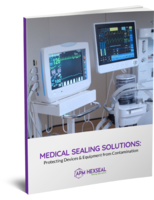ASTM Standard characterizes hydrogels in regenerative medicine.
Press Release Summary:
ASTM F2900, Guide for Characterization of Hydrogels Used in Regenerative Medicine, is intended for use by those working in development and application of hydrogels in regenerative medicine who need to characterize their materials. Contributing to study and use of hydrogels, standard provides critical overview of techniques used to characterize hydrogels and presents information so it can be understood by multidisciplinary practitioners.
Original Press Release:
New ASTM Standard Guide Characterizes Hydrogels in Regenerative Medicine
W. CONSHOHOCKEN, Pa.-Hydrogels are highly hydrated polymer networks that will play an increasingly important role in the realm of regenerative medicine over the next decade. The reason for the growth of hydrogels is twofold:
A new ASTM standard will contribute to the study and use of hydrogels. ASTM F2900, Guide for Characterization of Hydrogels Used in Regenerative Medicine, was developed by Subcommittee F04.42 on Biomaterials and Biomolecules for TEMPs (tissue engineered medical products), part of ASTM International Committee F04 on Medical and Surgical Materials and Devices.
ASTM F2900 will be used by those working in the development and application of hydrogels in regenerative medicine who need to characterize their materials.
"The move toward using the body as its own bioreactor has resulted in the development of new hydrogel systems that can be injected into wound sites together with cells and growth factors to form self-assembled structures that greatly facilitate healing, the rebuilding of nerves and repair of cartilage," says Melissa Mather, senior research fellow, Electrical Systems and Optics Research Division, University of Nottingham, and strategic research fellow, materials division, National Physical Laboratory, Teddington, United Kingdom. "These new materials and new applications of existing formulations will need to be supported by characterization and performance data to ensure batch-batch variability control and to optimize the materials for a particular application."
Mather notes that there are a number of techniques available for characterizing hydrogels. "ASTM F2900 provides a critical overview of these techniques, presenting the information in such a way that it can be easily understood by the multidisciplinary practitioners active in regenerative medicine," says Mather.
To purchase ASTM standards, visit www.astm.org and search by the standard designation number, or contact ASTM Customer Relations (phone: 610-832-9585; service@astm.org). ASTM International welcomes and encourages participation in the development of its standards. For more information on becoming an ASTM member, visit www.astm.org/JOIN.
ASTM International is one of the largest international standards development and delivery systems in the world. ASTM International meets the World Trade Organization (WTO) principles for the development of international standards: coherence, consensus, development dimension, effectiveness, impartiality, openness, relevance and transparency. ASTM standards are accepted and used in research and development, product testing, quality systems and commercial transactions.
View this release on the ASTM Web site at www.astmnewsroom.org.
ASTM Committee F04 Next Meeting: Nov. 15-18, 2011, November Committee Week, Tampa, Fla.
Technical Contact: Melissa Mather, University of Nottingham, Great Britain, Phone: +011-44-5951-5337; melissa.mather@nottingham.ac.uk




